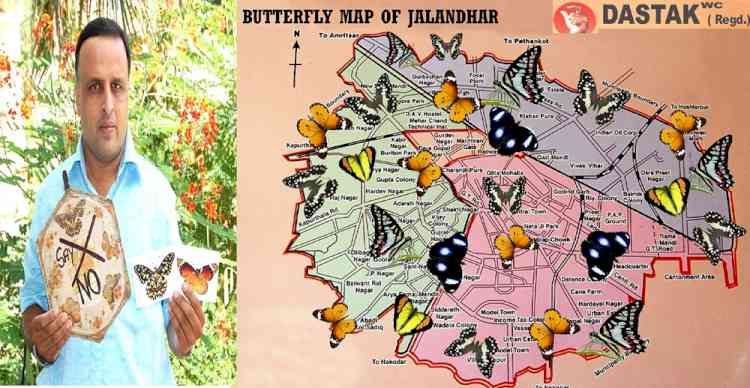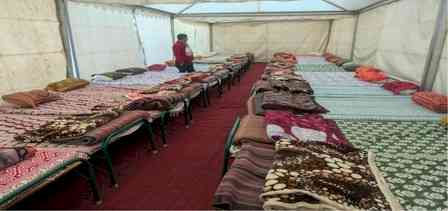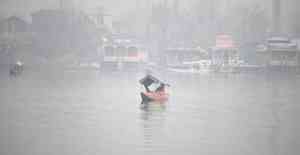Prof Sandeep Chahal develops Butterfly Map of Jalandhar
With an aim to create awareness about the decline in their population, and promote conservation, every year, March 20 is celebrated as World Sparrow Day across the world. Dastak Welfare Council a Jalandhar based NGO had launched Save Sparrows Campaign across Punjab in 2007.

With an aim to create awareness about the decline in their population, and promote conservation, every year, March 20 is celebrated as World Sparrow Day across the world. Dastak Welfare Council a Jalandhar based NGO had launched Save Sparrows Campaign across Punjab in 2007. Prof Sandeep Chahal -Founder President of NGO Dastak Welfare Council-Pioneer in Conservation of Environment Indicator birds in Punjab for the last 16 years has made a Sparrows Distribution Map of Jalandhar last year signifying the sighting and presence of Sparrows( Passer domesticus Indicus) population in Jalandhar and now come up with Butterfly Map of Jalandhar signifying the sighting and presence of Butterflies species in Jalandhar .Prof Sandeep Chahal said, “In our research over the years we have found that the primary diet of almost all the birds is larvae or caterpillars of butterflies and birds feed their juveniles or young ones with it as they are rich source of protein , much needed for their wings growth .” So it is very important to maintain a healthy balance in our ecosystem to maintain a consistent food chain balance by promoting well being of Butterflies species in order to sustain Bird life. Prof Sandeep Chahal with his team did a year round survey of existing butterfly species in Jalandhar and has developed Butterfly Map of Jalandhar which specifies that in most of 5 Sub-Divisions and 11 Blocks of Jalandhar viz Jalnadhar – 1, Jalandhar – 2, Nakodar, Phillaur and Shahkot and 11 Blocks ie Adampur, Bhogpur, Jalandhar-East, Jalandhar-West, Lohian, Mehatpur, Nakodar, Nurmahal, Phillaur, Rurka-Kalan and Shahkot the most commonly found butterfles species are Citrus butterfly eg Lime Butterfly (Papilio demoleus ) and (Common jay (Graphium doson ), Milkweed butterflies eg Plain Tiger (Danaus chrysippus ) , Common Indian crow (Euploea core ) and Common evening brown (Melanitis leda ), Cabbage Butterfles eg Large cabbage white (Pieris brassicae) and cabbage white (Pieris canidia), Brush-footed butterflies eg Lemon pansy (Junonia lemonias ), Peacock pansy ( Junonia almana ), Mottled emigrant (Catopsilia pyranthe ), White orange tip (Ixias marianne), Yellow orange tip (Ixias pyrene) and the great eggfly (Hypolimnas bolina ),etc.
There are 24000 known butterflies species in the world and about 1500 butterflies species are found in India and 142 species of butterflies of 14 families, are found in Punjab with an area of 50,362 sq km of area that has 12 natural wetlands (spread over 8 sq km) and 10 man-made wetlands (147 sq km). Prof Sandeep Chahal goes on to explains that butterfly poachers carry illegal trade of 20 million dollars trade in the world every year. these Butterfly poachers engage young children for Rs150 a day under child labour flouting child labour norms and sell the priced catch at Rs 2000 to Rs 5000 per framed real butterfly which are proudly displayed on the walls of the living rooms by the ignorant upper-class people . Butterflies pollinate about 75 per cent of staple crops in the world and 80 per cent of all flowering plants. The economic value of pollination is about $ 200 billion and butterflies give benefit to all the farmers of 200 billion dollars every year as they are the world’s second best pollinators after honey bees .The importance of butterflies in many ecosystems, however, would seem to support measures designed to restrict their capture and trade. Butterflies make their primary contribution to the environment through pollination. A pair of bird wing butterfly found on Tiger Hill of Jammu and Kashmir is sold at price ranging from $ 2,500 to $ 3,500 in the international market. One butterfly fetches Rs 500 to the poacher. Thailand, Malaysia, Hongkong are the hub of the international trade in butterflies, which are killed and dried to be used in greeting cards, books and other decorative purposes.
The NGO has motivated and distributed free of cost bonsai variety of citrus plants to the populace of the region which promotes the population of Lime butter4flies species and has also motivated the farmers to cultivate cabbage in their fields which in turn promoted the population of cabbage butterflies –the beautiful green white butterflies. Prof Sandeep Chahal said “ Gangs of professional butterfly hunters and poachers organize expensive expeditions, sometimes hire local people, and use all possible methods of collecting their target butterflies species in large numbers. They use special sources of ultraviolet light, chemical baits, and sometimes cut down large trees to get caterpillars from the forest canopy. The more rare is the species, the higher is the market price; so a butterfly can be hunted into extinction within just a few years. Some of the butterfly poachers make special efforts to hunt a species to complete extinction - in this case, the price for each specimen will be astronomical. .
Catching butterflies for souvenir trade is an important source of income for young people in some villages of north east viz Mizoram , Sikkim , Meghalaya , Tripura Nagaland, Sikkim, Arunanchal Pradesh, Jammu and Kashmir and Punjab . In many places around these villages of the mentioned states school-age children make more money than their hard-working parents, simply by catching thousands of butterflies and other large insects and selling them to insect dealers. In Punjab NGO Dastak Welfare Council’s President Prof Sandeep Chahal said,” Lime or Citrus butterfly helps in the bumper production of Kinnow fruit, but it is also poached ,killed and sold for Rs 500 per piece and children of age group 10 to 14 years are used by butterfly poachers and smugglers to kill butterflies for Rs 150 per day” Large-scale poaching and international smuggling nexus is threatening many species of butterflies and moths in the Himalayas. A pair of bird wing butterfly found on Tiger Hill of Jammu and Kashmir is sold at price ranging from $ 2,500 to $ 3,500 in the international market. The yellow colour in the wings of some species of butterflies is permanent. It is even used in gold ornaments in some countries. In Taiwan wall plates used for decorating houses are made from wings of butterflies, Prof sandeep chahal said.
The international borders of the country along China and South East Asian countries are the hot spots for smuggling of butterflies from the country. The butterflies are also protected under the international trade for endangered species.
The main problem in fighting international insect trade is lack of information. Even people responsible for the enforcement of environmental laws often pay little attention to insects smuggled out or in their countries. Insect collectors never tell their secrets, and professional entomologists are more interested in agriculture pests and other economically important species than in rare ones. If the situation will not change within the next decade, hundreds of insects will be hunted to extinction, mostly without even being noticed by scientists. As long as open trade in insects goes on unchecked , the mass extinction of these groups like butterflies will continue, fed by our ignorance and greed.


 City Air News
City Air News 










